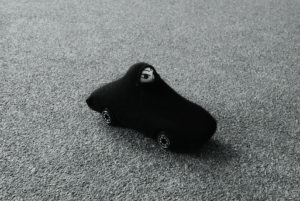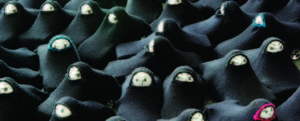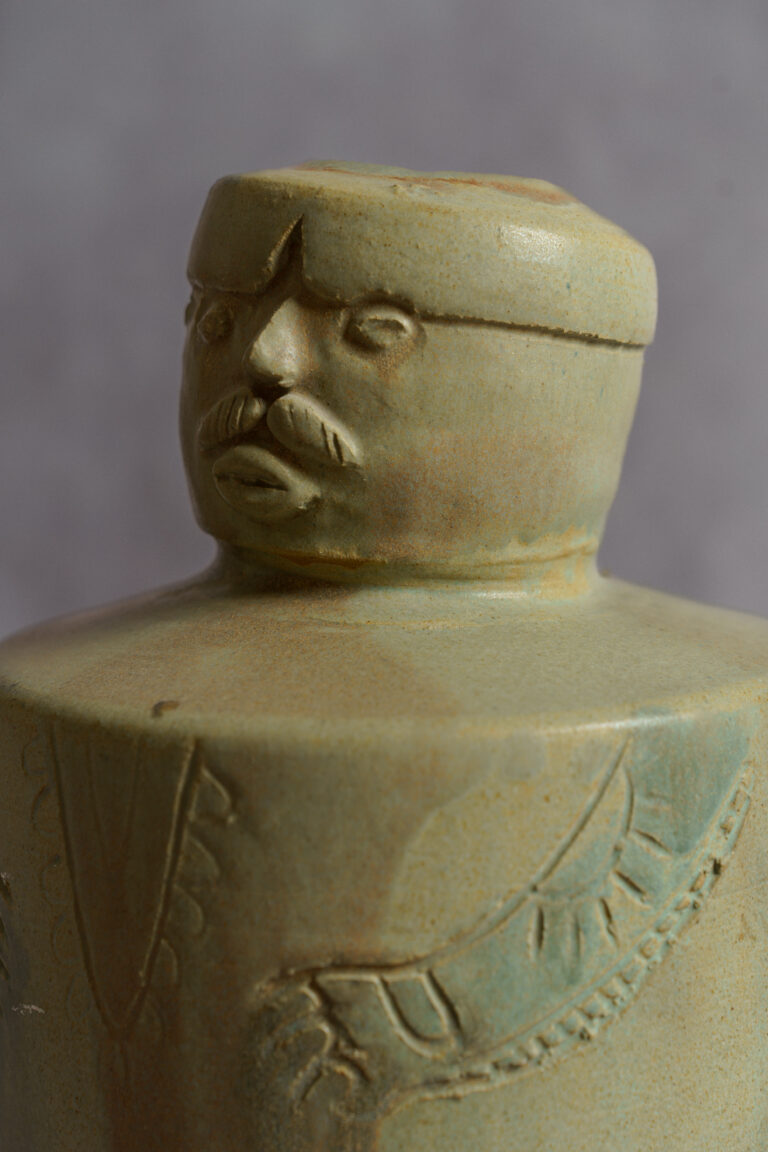Unveiling
There is a key moment in The Rebel¹ where the misunderstood artist is stuck on a millionaire’s yacht in Monte Carlo where he has been bullied into making a sculpture of this important art collector’s trophy wife. As a masquerade party gets underway on deck, this ‘Venus at the Waterhole’ stands veiled and waiting. At the critical moment, as the veil comes off, a horrified silence grips the crowd…
Unveiling is the expression of an attitude born in the Reformation, theorised in the Enlightenment, and given political agency as part of the colonial project – that what is hidden must be revealed. Unveiling remains central to the Western engagement with the world and is a key part of its rhetoric.

Consider the car itself. When a new model is about to be presented at the motor show it is kept veiled and waiting, shrouded in secrecy. Once the unveiling ceremony takes place the product is ‘naked’. And it goes without saying that the car is always female. It is even, as Roland Barthes joked, a Goddess for the modern age, and one that is made to yield to the ‘reasoned assault of touch’.
‘The bodywork, the lines of union are touched, the upholstery palpated, the seats tried, the doors caressed, the cushions fondled; before the wheel one pretends to drive with one’s whole body. The object here is totally prostituted, appropriated…’²
The unveiling is therefore what precedes and initiates this ‘reasoned assault of touch’. It is of course obvious to note how importantly the veil has figured in Western representations of the East… as if inviting conquest.
Highway to Hell
In June 2009 the French president used a “state of the nation” speech to pass judgement on the use of the full veil by Muslim women. He spoke of women who wear the burqa being ‘prisoners behind a grill, cut off from all social life, deprived of all identity’. He added that the burqa is not a ‘religious sign’ but a ‘sign of enslavement’, and he finished with the flourish that “It will not be welcome on the territory of the French Republic.” ³
One can sense all this anxiety directed at the burqa as symptomatic of that old chestnut – THEY ARE TAKING OVER. There is a suspicion that the underlying figure of fear is of that the black clad black woman… to be veiled, alluring and exotic is one thing… but to insist on an opaque envelope of blackness is… a deliberate snub.

This anxiety gets multiplied in Nazneen Ayyub-Wood’s BurKars – the Goddess has covered up and multiplied. These Islamic car-women are taking up gallery floor space in huge long tailbacks clogging up the peripheral zones somewhere near the skirting board. It portrays that very dystopian future that we know is bound to happen on the bleak and endless highway to extremism. ‘The Blackistanisation of life’ as we know it.
Or does it? On closer inspection, there are other things going on… construction vehicles lurk with diggers like insectoid mandibles and backhoes furled like a scorpion tail. Poised for subliminal DIY intervention, to strike at the fabric of the gallery wall, to undermine it by starting at… rock bottom. It’s as if the clarity, the sanctity, the very WHITENESS of the art space is being treated with contempt. These women are trying to build their own future – without planning permission.
Silhouette
The speech by President Sarkozy prompted French Muslim media commentators to make the observation that: ‘The silhouette of the burqa is a sad mirror in which our politicians can see all their inadequacy’⁴
Ayyub-Wood has previously played with the way this black form, like a shadow, can infiltrate public spaces by modifying the silhouette of the burqa into that of a cat-human. A transformation that is both disarming and inappropriate. In the Queens Museum of Art (in the building where the UN was created) she and her baby played in their cat hijabs underneath Michaelangelo’s Pieta. She has commented that “The form of a woman in a traditional hijab is such a dramatic gesture, it’s almost like being cut out of a picture.”
There are echoes here of another ‘sad mirror’, from a Baudelaire poem, made of a widow’s tears that become ‘reproaches to God… towards the sky ironic and cruelly blue’. But what is truly sad about Sarkozy’s cruel mirror is that he is pimping and preening himself in the public spectacle of others’ unwelcomeness.

What is it that is so threatening about the burqa that it has become subject of new legislative proposals across Europe? In one Belgium town an injunction was introduced against the six women known to wear it, in Holland a ban was considered against an estimated 500 wearers, and now legislation has been proposed in Italy and even Denmark where an estimated three to four women wear the burqa (talk about cartoon politics!).
The burqa is itself a perfect anti-intellectual weapon⁵, which is why Sarkozy uses it.
When he speaks of ‘prisoners behind a grill’, he is building up the image of the burqa as a ‘sign of enslavement’. The timing is of particular interest – exactly one week before the speech at Versailles, a government report was published into prison conditions. What happened is the President decided to ‘bury’ it by exchanging one set of very real prisoners for another set of very metaphorical ones. He played the oldest trick in the book of tall oriental tales – for underneath Sarkozy’s burqa is…wait for it (as we draw the veil off his ‘Venus at the Waterhole’)…a young Muslim man in his mid-twenties who is… behind a grill, cut off from all social life, deprived of all identity’… a prisoner of the Republic!⁶
Endnotes
- Tony Hancock, The Rebel (1960) (Warner Bros).
- Roland Barthes, The New Citroen – Mythologies (1957) The name of the new model D.S. was a pun on Goddess (Déesse).
- Nicholas Sarkozy 22/06/09 at the Palace of Versailles, the first speech by a French President to both houses of parliament since 1873.
- La burqua ou le voile des échecs de la République 25/06/09 – by Madjid Si Hocine & Mouloud Aounit on http://www.oumma.com. See also BURQA BLUES: a French Soap Opera Sharif Gemie on http://www. zmag.org
- Roland Barthes, Photography and Electoral Appeal – Mythologies (1957). He proposed that the photograph is indispensable to the politician in so much as ‘it constitutes an anti-intellectual weapon and tends to spirit away ‘politics’ (that is to say a body of problems and solutions) to the advantage of a ‘manner of being’, a sociomoral status.’
- The number of Muslim inmates in French prison is estimated between 50% and 80% of the total, the majority of which are young men in their 20s. As of 01/08/09, French prisons had space for 52,741 inmates, while the actual number of prisoners was 62,420. The domestic intelligence agency Renseignements Généraux (RG) has identified prisons as the main recruiting ground for radical Islam and for the specific spread of the Salafism – which is linked to the use of the burqa in the first place. (Various news sources).














